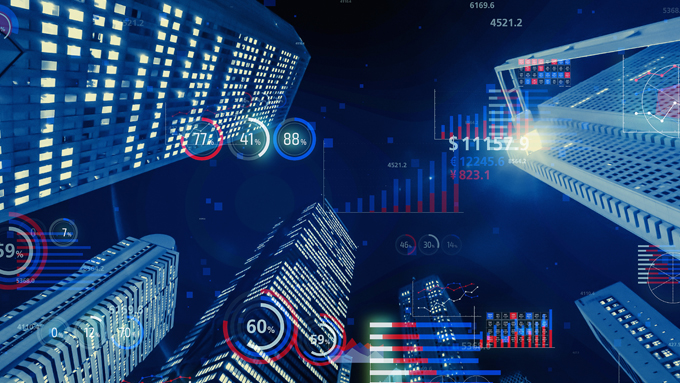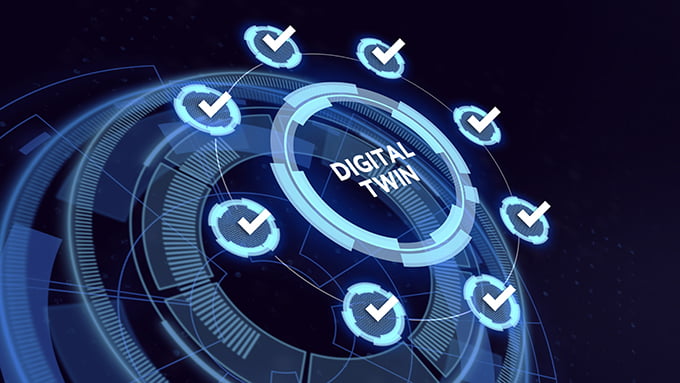How machine learning algorithms are paving the way for predictive maintenance in the built environment

In building and infrastructure systems, one of the greatest challenges for operators and managers is ensuring that their high-value, time-sensitive, and mission-critical assets are consistently operating efficiently and at the best possible capacity. Every single second of downtime can come with associated costs. Even an outwardly unremarkable drop in efficiency can have consequences in terms of energy consumption, costs, and lost productivity.
By leveraging the extensive capabilities of machine learning, Digital Twins with advanced machine learning algorithms can give operators a portfolio management solution to enable immediate fault detection and facilitate predictive maintenance in their mission-critical assets.
What is the difference between preventative and predictive maintenance?
Preventative maintenance is conducted at fixed intervals, regardless of existing conditions. This type of maintenance is carried about based on manufacturers recommendations. On the other hand, predictive maintenance is conducted whenever a need arises, with data-backed interferences to determine impending faults or failures. Predictive maintenance is also optimized to suit existing operating conditions within a facility.
Because predictive maintenance is performed only when needed, it can significantly reduce labor, operational and material costs.
How does predictive maintenance work?
By incorporating a number of strategically-selected machine learning algorithms, tailored to the product and tiered to cover every possible outcome, Digital Twins can drive predictive maintenance and empower operators to deliver the best value.
Take the case of an oil and gas pipeline. Naturally, any solid design for such an asset would include redundant systems that prevent a single point of failure from wrecking the entire system. Still, it’s important for operators to have clear insights into the performance of this pipeline – from its pumps to wear-and-tear on its bearings or a misalignment in an axle or shaft. The cost of downtime for such an asset could be devastating. Knowing immediately if there are faults affecting the behaviour of this asset or – better yet – being able to predict when a fault or failure is likely to happen can add enormous value to operators.
The signal is in the variation
One of the key components of a pipeline are its pumps, and therefore, monitoring pumps is widely recognized as crucial in maintaining pipeline operations. Traditionally, maintenance workers have relied on either manual inspections or regular preventive maintenance recommended by manufacturers. Today, however, with the rise of Internet of Things (IoT) devices and machine learning, it becomes possible for a platform like Para to give operators a real-time view of a given asset’s performance and integrity as well as advance warnings on any imminent faults or failures.
How does that work in practice? Vibration sensors attached to the pump would transmit data to the Digital Twin platform. The platform would include a tiered approach with machine learning algorithms that are tailored for the type of asset and for the specific goal or outcome as prioritized by the operator. For a pump, these machine learning algorithms can understand vibration sensed patterns and are able to detect which of these vibration patterns correspond to impending failures. Moreover, these algorithms are not only able to use vibration patterns to predict failure ahead of time, they can also be used to infer where a fault may be exactly. Different vibration patterns are associated with different failures or faults, and therefore, these patterns may be used to determine if an imminent failure is associated with, for example, bearings or a misalignment in axle and shaft.
Predictive maintenance, for all assets
A pipeline, of course, is simply one illustrative example. Digital Twins can be used for predictive maintenance in a wide variety of use cases. In buildings, for example, the HVAC system – one of the greatest energy consumers in a building – can be monitored and optimized in real time and down to its individual parts (such as air-handling units and other components). Similarly, a photovoltaic panel system can significantly reduce the energy consumption of a building, and a fault or disconnection in the system would imply a significant cost difference, not to mention a difference in carbon emissions. Predictive maintenance for such a system would save on costs, maintenance, and sustainability metrics.
The added value that Para offers all of these systems and various others – beyond regular maintenance and facility management practices – is that our platform uses machine learning to understand a building’s actual existing conditions and occupancy patterns. The platform builds on this understanding to tailor industry-standard equipment handling measures and specifications to accurately measure how machines are performing and implement recommendations accordingly. This way, we can leverage industry expertise and detailed insights into existing conditions to optimize systems and ensure smooth, sustainable, and highly resilient operations.



